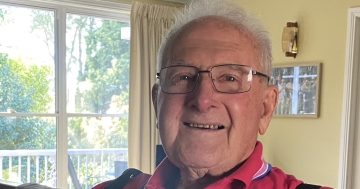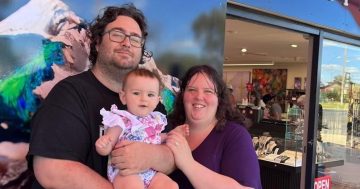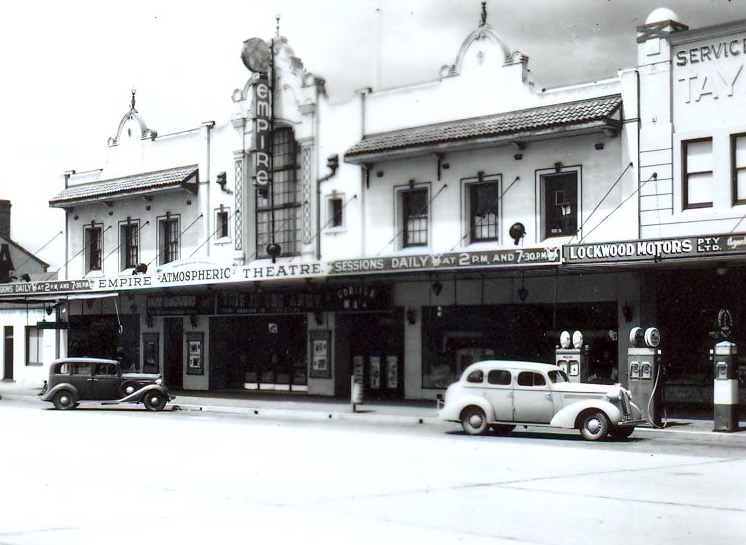
The quiet main street depicted above in 1946 belies the reality in Goulburn outside the Empire Theatre when big events were staged there, drawing swarms of people. Photo: Goulburn Mulwaree Library.
Of the many grand heritage buildings in Goulburn, one stands above the rest for its lavish interior even though it was built at the start of the Great Depression for a population of about 14,000 people.
The architects of the new Empire Theatre, Hassall & Stockham were appointed the previous year despite the Wall Street crash that triggered a worldwide downturn. They styled their building as an ‘atmospheric theatre’.
Two years earlier Austrian/American architect John Ebson, who had designed ‘atmospheric theatres’ throughout America, completed the Capitol Theatre in Sydney, which still stands today, closely resembling Goulburn’s Empire Theatre, which has long gone.
The Empire became the Odeon after Greater Union acquired the operating company in 1948. As well as a picture theatre the foyer was used for balls, dances, concerts and exhibitions. In 1947 Farmers and Graziers even held a shearing competition on the stage.
The Empire Theatre seated 2200 people, and on special occasions up to 3000 people. It closed as the Odeon in 1966 because people stopped going to movies, preferring to stay at home and watch television.
Goulburn Mulwaree Library’s collection of an opening souvenir brochure, handwritten letters, black and white photographs and oral recordings of moviegoers and entertainers captures the pre-television era.
People came to the pictures in their best suits, new dresses, and hairstyles for a night in the ‘Theatre Magnificent’.
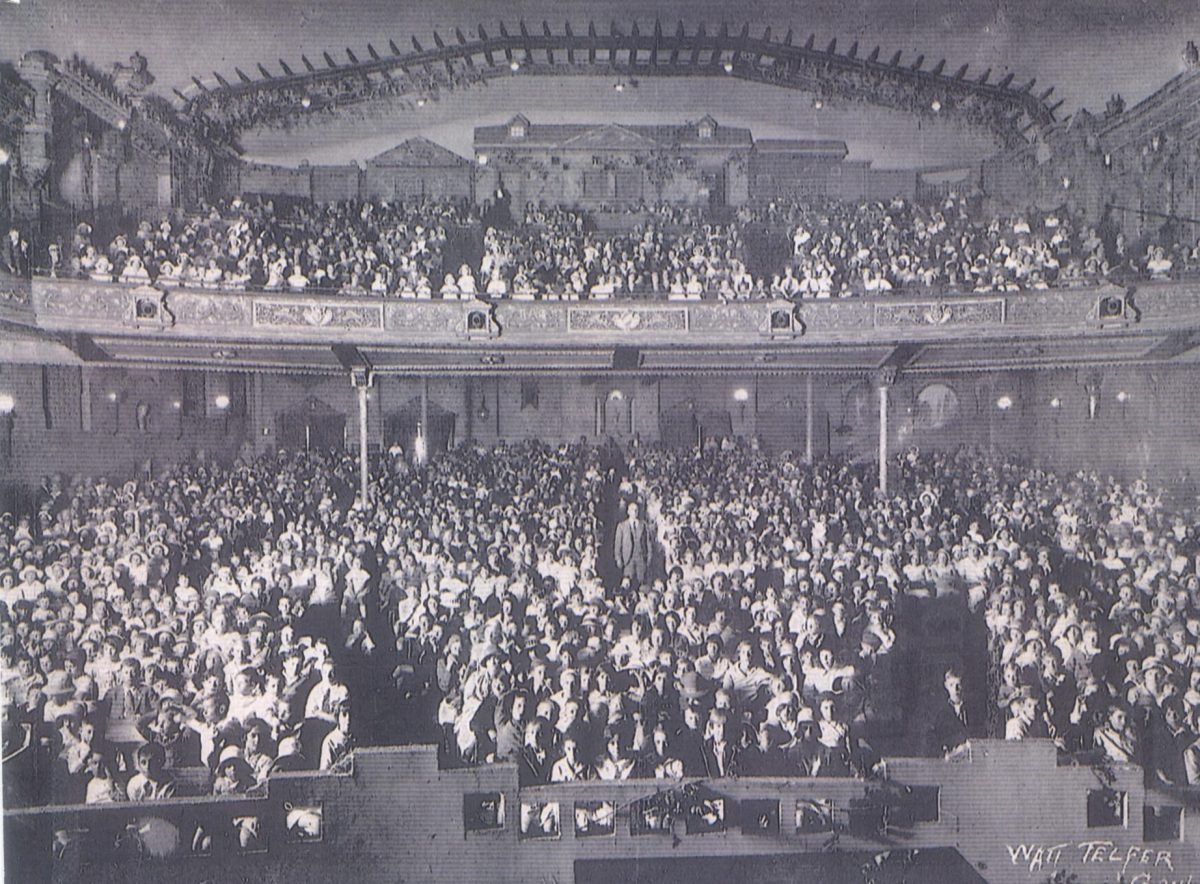
Every seat it seems is occupied in this 1940s photo inside the Empire Theatre. Note the elaborate adornments and night scape. Photo: Watt Telfer/ Goulburn Mulwaree Library.
Coinciding with the arrival of ‘talkie’ movies, the 15 April 1930 souvenir brochure has all the hype Hollywood could muster in print:
“The best stories, the finest dramatic and musical works of the stage and opera, the greatest stars on the screen and the most talented stage and featured players are combined with unlimited production sources to give you Metro Goldwyn Meyer entertainment … entertainment that is hailed supreme in the world.”
The brochure describes a Spanish-designed foyer and statue-studded auditorium, a garden of Venetian art rich with terraces and balconies all sheltered under a vast spreading dome. The Elizabethan-designed domed ceiling was artificially decorated with 20,000 sheets of gold leaf.
In the library’s oral history, broadcaster Ron Gersback recounts as a child: “On Saturday matinees, as soon as we saw the stage lights light up and then the lights go out, well the roar of the children would be just tremendous.”
A dominant social magnet, the theatre’s Saturday matinee lured swarms of children who lined up from the main street back to Clifford Street. Lavish balls began at 10:30 pm after the movies finished and were a highlight of Goulburn’s social calendar.
As a wide-eyed youngster, Ron saw Judy Garland in The Wizard of Oz and was amazed at the vastness of the theatre.
As an adult he remembers people coming out of the theatre to the balcony to sit, smoke their cigarettes and enjoy a beautiful view of people walking out underneath them.
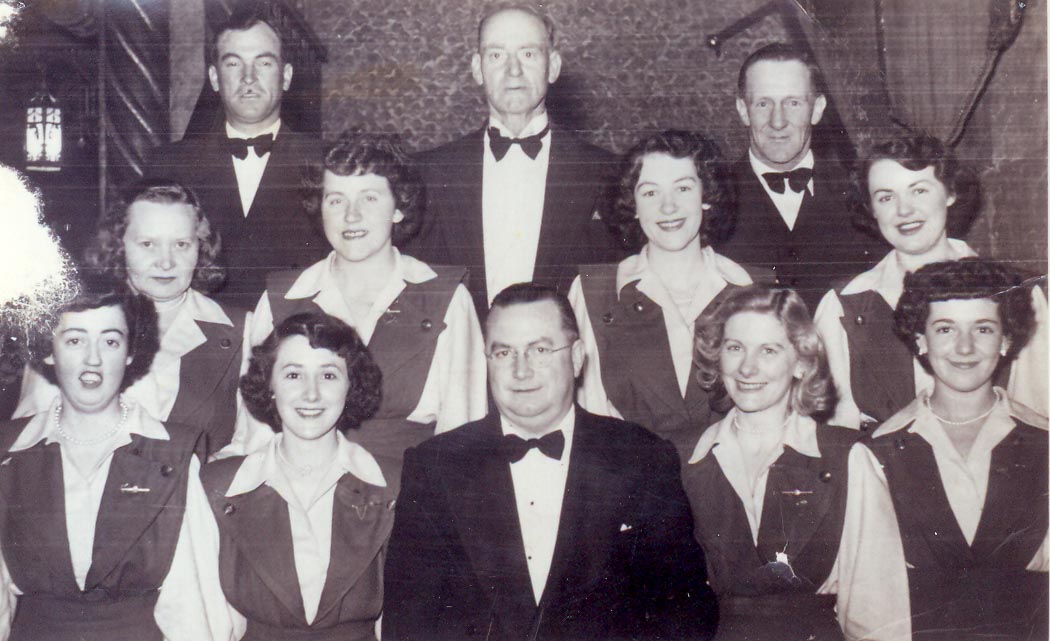
Theatre staff photographed about 1950. They include N. Newling, W. Chalker, B. Brown and N. Gorman and other unidentified people. Photo: Goulburn Mulwaree Library.
The library collection includes reminiscences in 1998 of Evelyn Todkill, (nee Hunter and formerly Gann), who was a full-time usherette at the Odeon.
“Masked balls, fashion parades on the beautiful steps leading to the upstairs lounge were all part of an ongoing entertainment,” Evelyn wrote.
“Greater Union Theatre owned us and had many statewide competitions. Over the years we won two which meant we had to have good attendances, very spic and span staff, and a lot of hard work by staff painting and scrubbing our beautiful statue and lamps. We had the foyer looking like a palace.”
Anyone growing up in Goulburn in the 1950s and 1960s has a favourite story from the Odeon.
Trained by a professional dance instructor from Sydney, Kevin Thompson attended many of the balls as a partner for nine debutantes. Aside from all the movies, he most remembers the concerts in the Odeon’s foyer, which could hold 400 to 500 people.

Kevin Thompson and Cathy Nash make their entrance to a debutant ball in Goulburn. Having learned to dance in the early 1950s Kevin partnered nine debutantes at balls at several venues including the Masonic Hall the Odeon Theatre. Photo: Thomson family collection.
Diane Pike (nee Hennessy) remembers as a child going to Saturday matinees to see western movies. “We’d have sixpence to spend at interval, which would buy an ice cream and lollies. I think it cost one shilling to get into the theatre,” she said.
“My mother used to make choc-top ice creams and sometimes work behind the counter at interval,” she said.
She remembers going to see Gone with the Wind. “Saturday nights were always a big deal to dress up and even get our hair done and go to the movies at the Odeon usually, sometimes the Hoyts,” she said. “It was such a beautiful theatre.”







